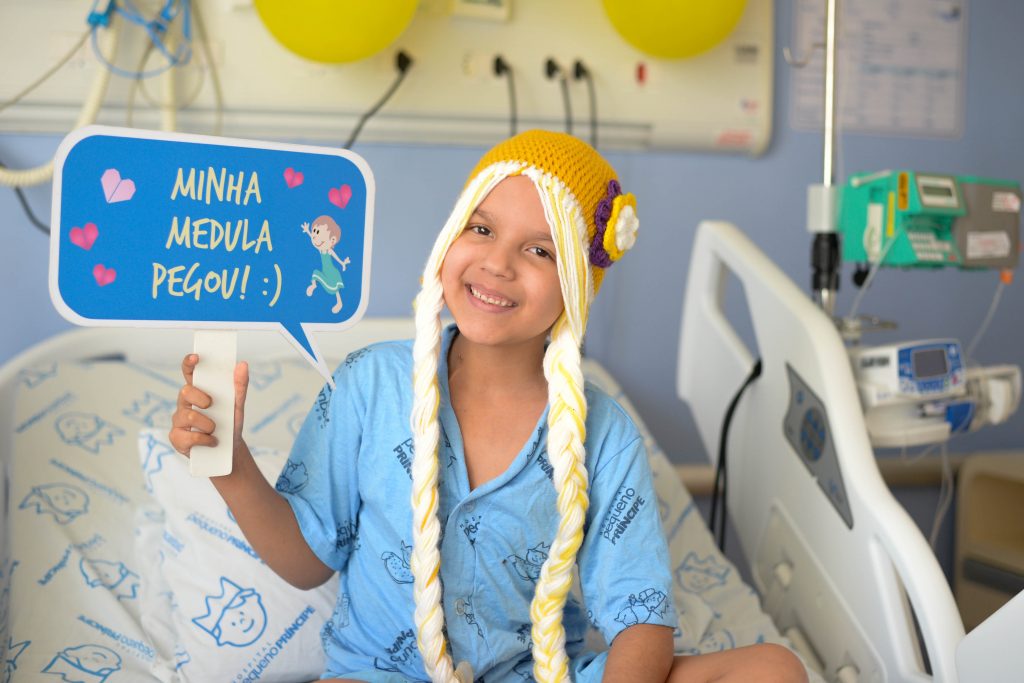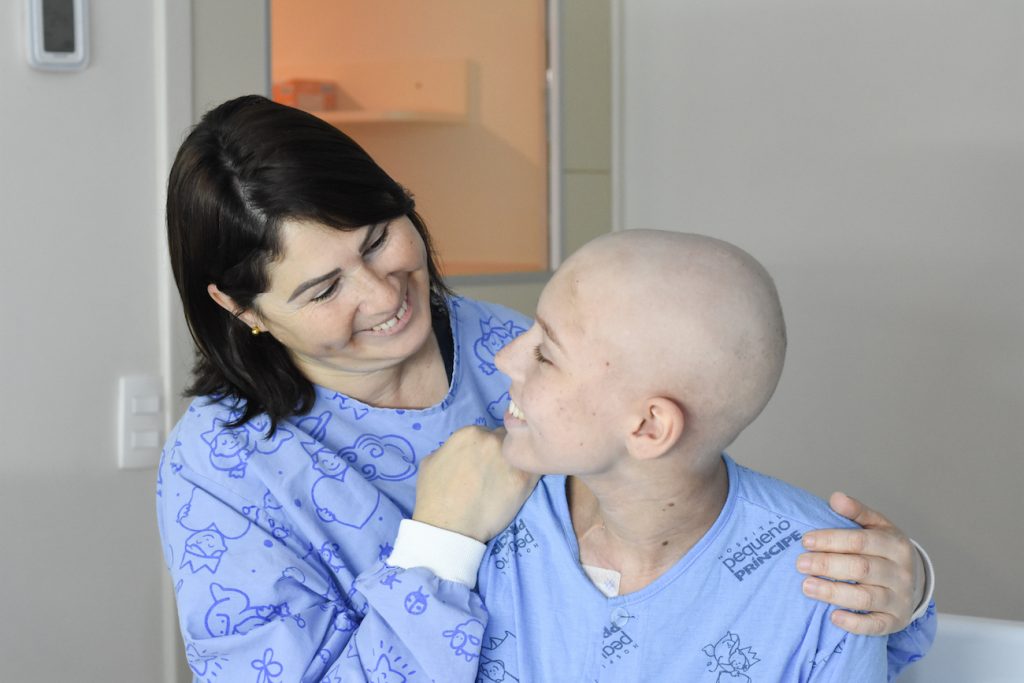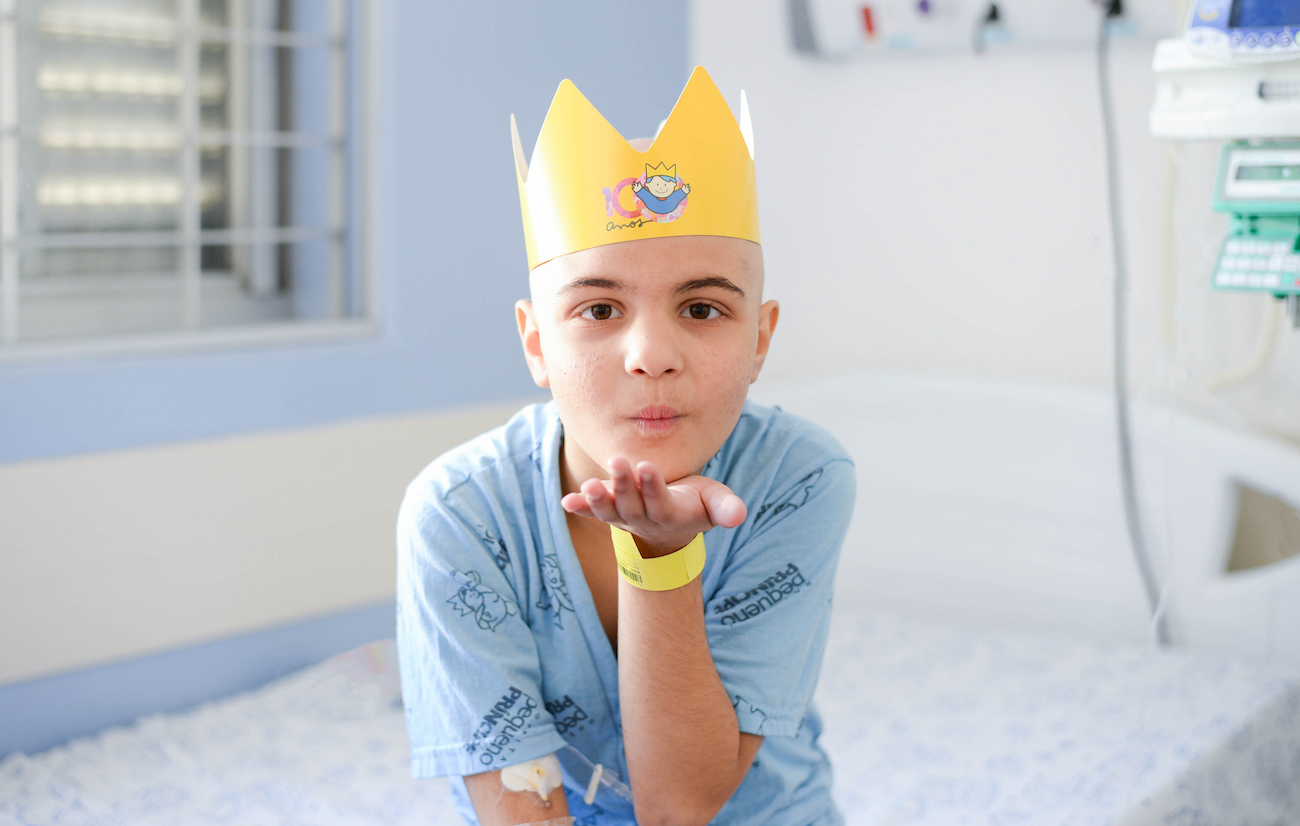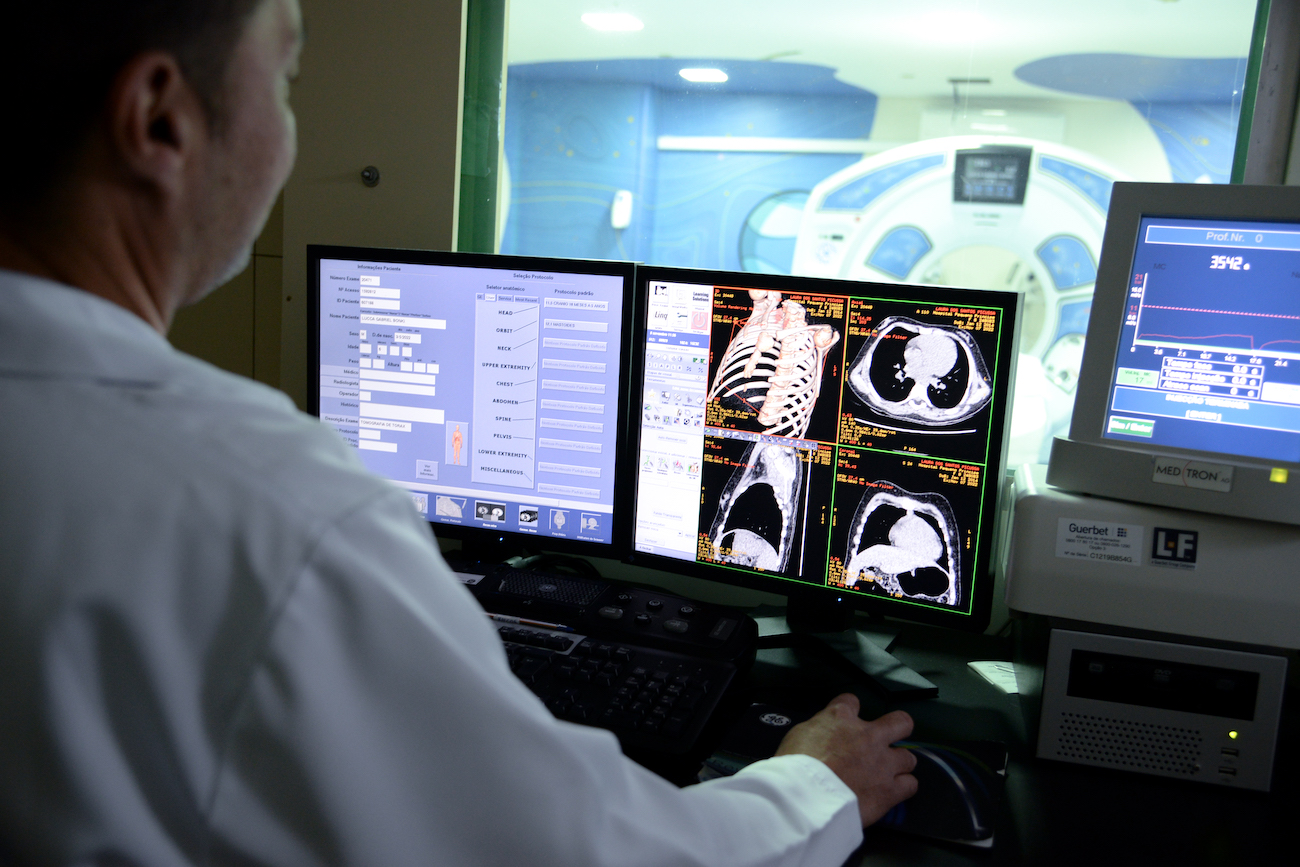Research wants to identify how to avoid relapses in the treatment of leukemias with BMT
The incidence of relapse after transplantation ranges from 13% to 47%, depending on the patient, disease and characteristics of the transplant. In Pequeno Príncipe, about 21% of patients had relapses

Leukemia is the most common type of cancer in children, according to the Brazilian National Cancer Institute (INCA, abbreviation in Portuguese). To face the disease, there are some treatment possibilities, such as chemotherapies, bone marrow transplantation and cell therapies. Many patients, however, undergo treatments, recover and sometime later fall back to the disease. Identifying risk factors for relapses in patients who underwent bone marrow transplantation (BMT) is the objective of a research project carried out by scientists from the Pelé Pequeno Príncipe Research Institute.
“When the child has a relapse after the transplant, the possibilities of treatment with real healing options become scarce. With this research, we want to understand how to try to avoid these relapses, contributing to the improvement of the chances of cure for these patients,” explains doctor and researcher Polliany Pelegrina.
To outline this scenario, scientists are collecting data from patients aged 0 to 17 years who underwent BMT to treat acute leukemias between 2010 and 2019, in some of the main treatment centers in Brazil, such as Pequeno Príncipe Hospital, INCA, Hospital de Clínicas of the Federal University of Paraná (UFPR, abbreviation in Portuguese) and Nossa Senhora das Graças Hospital.
Pequeno Príncipe
Pequeno Príncipe data have already been collected. Of the 88 patients who met the research criteria, 21% relapsed. According to the literature, the incidence of relapses after transplantation ranges from 13% to 47%, depending on the patient, disease and characteristics of the transplant. “We have already identified some common factors among these patients. The first is the need for more lines of chemotherapy treatment to enter into remission of the disease. The second is not being able to achieve complete remission of leukemia before transplantation.”
The team is also investigating which are the protective factors, that is, those that helped the patients not to have relapses. In this sense, transplants with alternative donors stand out – haploidentical (50% compatible) and unrelated. In addition, it is important to have access to genetic and molecular tests to define targets to be treated after transplantation and to indicate patients at higher risk early, referring them to transplantation. “These exams, which are carried out at the Genomic Laboratory in Pequeno Príncipe, are essential for indicating BMT at the right time. They also help the care team to direct post-transplant care,” observes the doctor.
“This is yet another demonstration of how the Genomic Laboratory is transforming lives. This structure was built with resources we received from our investors, especially from supporters through the Pequeno Príncipe Gala,” emphasizes the executive director of the Hospital, Ety Cristina Forte Carneiro.
Cell therapies
One of the major contributions of the study is to indicate the need for new treatment strategies for children who have relapses, thus avoiding deaths. Among the new treatments already available in medicine is Car-T Cell, a type of immunotherapy that uses T lymphocytes, immune system cells responsible for fighting pathogens and killing infected cells. Through this therapy, T lymphocytes are removed from the body, isolated and activated – that is, “reprogrammed” to be able to identify cancer cells. After this “reprogramming”, they are inserted back into the patient’s body. The modified defense cells return with more force to the organism to eliminate the tumor cells.
Therapy with Car-T cells has been available in Brazil since the beginning of the year, developed by a pharmaceutical company. However, it faces a major obstacle: funding. This treatment costs around US$ 400,000 and is not yet included in the list of procedures offered by the Brazilian Public Health System (SUS, abbreviation in Portuguese).
Car-T therapy is also being developed in some academic centers across the country. So far, only one center, in the inland of state of São Paulo, has carried out treatments for SUS patients. “We need to fight to achieve this modality, because it will become accessible to the majority of the Brazilian population, which uses the Public Health System,” advocates the head physician of the Bone Marrow Transplantation Service and researcher at the institution, Carmem Bonfim.
The Pequeno Príncipe Hospital is already qualified to carry out the Car-T Cell from the pharmaceutical industry, but it is known that few Brazilian patients will be able to benefit from it due to the high cost. However, to make the academic Car-T Cell viable, it is necessary to structure a cell therapy laboratory. “We already have studies for the implementation of this new and essential structure and now we are seeking funding for its implementation,” points out director Ety Cristina.
“Cell therapy and genomic therapy represent a bright future for medicine. It is our social duty to fight for these treatment alternatives to be available to all Brazilians,” stresses Carmem.

A story of overcoming
Eloisa was admitted at the Pequeno Príncipe Hospital in July 2019, aged 12, after going to the health centers in Curitiba for several days to find out what was causing her so much tiredness and headache. She was referred to Pequeno Príncipe, and her diagnosis of acute myeloid leukemia was confirmed, says her mother, Rosa Pereira.
The test that confirmed the diagnosis was immunophenotyping, performed at the Genomic Laboratory. The investigation of Eloisa’s condition continued with other exams, all performed free of charge, as well as the entire treatment.
The tests carried out at the Genomic Laboratory showed that Eloisa would have a higher risk disease and would benefit from a bone marrow transplantation. This early risk identification already helps the team to prepare the transplant quickly and reduce the toxicity of using more chemotherapy.
About a month after the beginning of Eloisa’s preparation, three donors were found for the teenager: two Brazilians and one American. The foreign donor had a 95% match and was chosen. On January 17, 2020, the marrow arrived in Brazil, allowing Eloisa to undergo the transplant.
“Forty-seven days after the transplant, we received the news that the bone marrow had taken hold. We had a big celebration, because that day was like she had been born again,” celebrates Rosa. It’s been almost three years since the BMT, and Eloisa is doing well, without relapses, and being able to go back to a normal life.
Click below and learn more details about the story of Eloisa.
More
Engagement in generous actions increases worldwide
GivingTuesday and “Dia de Doar” are opportunities to effectively contribute to causes that transform the planet
Pediatric care by the Brazilian Public Health System: why is funding so challenging?
The table fee that regulates payments to hospitals was formulated in the 1980s; in addition to not have the necessary inflationary corrections applied, it is based on medicine that has been practiced for four decades









